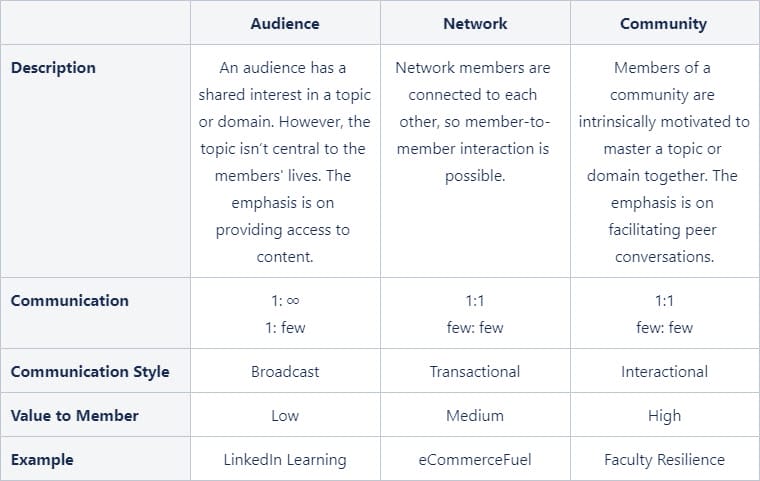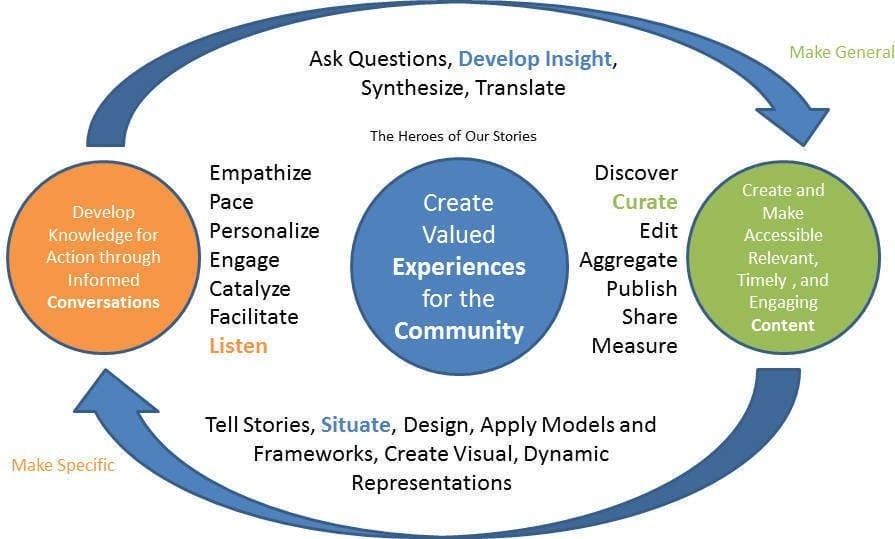How Might Starting with Small Group Conversations Lead to a More Successful Community?

Recently, Gina Bianchini, the founder and CEO of Mighty Networks, shared a couple of lessons learned by her company:
Our most successful Hosts only had 10 members in their communities after 30 days…Posting tons of videos and links to articles wasn’t the secret to community engagement — it was all about using Polls & Questions.
Let’s dig into why that might be true.
Audiences, Networks, and Communities
In order to evaluate Gina’s assertions, let’s first consider the differences among an audience, a network, and a community:

A community is characterized by connections and meaningful interactions among its members. As author Priya Parker notes in The Art of Gathering:
Connection doesn’t happen on its own. You have to design your gatherings for the kinds of connections you want to create.
When Gina speaks of success and engagement, she’s referring to cultivating valuable peer connections and conversations.
Culture, Norms, and Organic Growth
By starting small, we as community hosts can help cultivate a distinctive community culture and a positive set of community norms. I suspect that contributes to the likelihood of intrinsically motivated and effective member referrals.
Member referrals can have a disproportionate effect on the level of membership over time—particularly if referral-based membership is correlated with a long membership duration. That’s because word-of-mouth can benefit from a reinforcing cycle that yields (at least for a time) exponential growth.
Get the foundation right, and your community can experience robust growth. Get it wrong, and you’re more likely to have to rely on relatively expensive advertising and promotion to attract new members.
Conversation Trumps Content
Cultivating a learning community isn’t about pumping out content. Rather, it’s more about using thoughtfully curated content to stimulate and inform conversations among members regarding how to apply knowledge in their lives in order to achieve mastery.

The distinction can feel a bit fuzzy at times. I try to make it operational by asking myself two questions:
-
How might the content I’m developing be used to support a conversation among members?
-
What have I learned from a conversation that could be synthesized for the benefit of my members?
Content may be king in the context of serving a passive audience. In the context of a community, however, content plays a supporting role in the conversation among members.
Polls and questions help surface potential “heat” around topics for discussion. Supporting content—stories, visualizations, models, and frameworks—can provide a common conceptual language to make the resulting conversations more productive.
